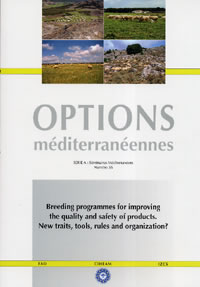| Article précédent | p. 47-53 | Article suivant |
Inclusions of selection for nematode resistance in British sheep reference schemes
Resistance to nematode infections is heritable and can be measured by Faecal Egg Counts (FEC). FEC sampling on an individual basis started in 2001 for Texel and Suffolk sire reference schemes. Univariate Estimated Breeding Values (EBVs) were calculated and provided to breeders. Individual faecal samples were collected at 20 weeks of age coinciding with ultrasonic scanning. Lambs had previously been drenched at 16 weeks of age with a non-residual anthelmintic and managed in a similar way. An existing model was adapted to calculate direct genetic effects of selection on FEC as well as phenotypic effects due to cleaner pastures and saving of anthelmintics. It is shown that substantial genetic improvements can be made in nematode numbers. Financial benefits depend on initial levels, carry-over effects and marketing opportunities. The FEC service will be offered to breeders in 2002, but FEC will not be included in the index.
- [ Télécharger ]
- [ Exporter la citation ]
Vous pouvez télécharger la citation au format :
- [ Imprimer ]
- [OMA55]




